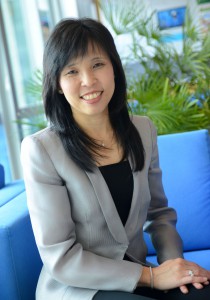
Over the past few decades, technology has radically transformed how we work and play. Automation has changed entire industries, and the Internet has revolutionised how we access information and make decisions.
The imminent reality is that our world will only come to depend more and more on technology, and jobs will become increasingly skills-biased. The workforce of tomorrow has to not only work productively to “consume” technology, but also understand how technology works.
This is especially true for Singapore – where we have a vision to become the first Smart Nation in the world. More so than other nations, we have an urgent and critical need to develop computational thinking as a national capability to lay the foundational building blocks that will realise this vision. After all, a large part of being a Smart Nation is tapping new technologies to problem-solve.
Computational thinking, often defined as a thought process that allows one to break down problems and formulate solutions systematically – much like how computers “think”, has come into focus as a fundamental skill for the next-generation workforce. The ability to problem-solve by applying logic and creative thinking are skills that employers in every sector will seek, not just in technology.
To reading, writing and arithmetic, we need to add computational thinking to every child’s analytical ability. While often imparted through coding, computational thinking is embraced not only for computer science applications, but also for its wide applicability to solve everyday problems.
An example is how two young medical students who envisioned the use of technology to help people live and stay healthy applied computational thinking and coding to develop an application called Eyenaemia. Eyenaemia is a non-invasive and easily-accessible screening tool for anaemia made for use by anyone. With this application, screening is now as simple as taking a selfie with a smart phone – after which the application analyses the conjunctiva and calculates the risk of anaemia, putting years of medical training into the hands of untrained users.
Stories like these inspired Microsoft to speak to 1,850 students under 24 years old in eight countries across Asia Pacific about their interest in coding. They told us that they recognise the value of coding in their education and the opportunities it creates for their future careers.
In Singapore, 76 percent of the 250 students we spoke to indicated that they want to know more about coding, and 72 percent said that coding is important to their future careers. 59 percent of these students agreed that coding will be relevant to all careers in the future, regardless of areas of specialisation.
This revealed a broad understanding amongst students of the impact of technology considering they represented a variety of specialisation including arts and humanities, STEM (Science, Technology, Engineering, and Mathematics) and business. What is especially interesting is that 78 percent of students who specialise in the arts and humanities want to learn more about coding. This strong positivity towards coding was also shared equally by male (79 percent) and female (74 percent) students, although coding has been a field dominated by males.
While the battle may be half-fought with keen interest from the students, there is still much to be done to accelerate the development of computational thinking among our youths.
The study revealed that students in Singapore feel relatively unsupported in their interest for coding. Even though 66 percent of the students we spoke to wish coding is offered as a core subject in their schools, only 45 percent said they had the opportunity to learn coding in school either as a core subject or an extracurricular activity. This is one of the lowest figures among the Asia Pacific countries surveyed. Furthermore, only 49 percent of students said their parents think coding is important to their future.
The evident disconnect between students’ interests and the support they are receiving from schools and at home indicate a pressing need for educators and parents in Singapore to better support our youths to understand computational thinking. The majority of students (54 percent) said they would be willing to take up coding classes outside of regular school hours. Currently, 44 percent of the students have already looked beyond the classroom and picked up coding on their own through online tutorials.
Today, programmes such as Code@SG by the Infocomm Development Authority (IDA) acknowledges the importance of computational thinking as an essential skill that will future-proof our youths. Through Code@SG, IDA works closely with stakeholders to introduce coding to more students in schools in a fun and easy-to-learn manner.
However, the drive towards computational thinking as a national capability is not the sole responsibility of government agencies. Private organisations and communities can contribute actively too. Microsoft’s YouthSpark #WeSpeakCode campaign has the mission to inspire youths in Singapore and around the region to start coding. By connecting student coders of all skill levels with the tools, resources, and experiences they need to turn their innovative ideas into reality regardless of the amount of time they can invest, we hope to equip youths with computational thinking skills and eventually nurture a generation of future innovators into savvy leaders and citizens that can make a real impact for a better Singapore.
While that is our long-term goal, what is more important now is to get everyone started on their coding journey, be it in big or small ways, in order for youths to have the right skillsets to unlock the opportunities in our future.
